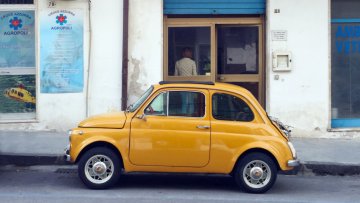Bogota is a great sprawling city built on an imperfect grid, but most of the places visitors frequent are on the north side of town in Chapinero, Usaquén and Suba. Traffic can be frustrating, but walking may be the only transportation needed to explore the Chapinero gayborhood and major historical sites. Considering engaging a car and driver by the day through the hotel concierge to get about town and go on side trips. El Dorado International Airport, about a 20-minute taxi ride west of the city, is the third busiest in Latin America with international travelers arriving at the El Dorado terminal (T1). Domestic flights by Avianca, the national carrier, leave from the Puente Aereo terminal (T2).
Cars may be reserved before arrival from major international agencies, often at less than a local hire, for pick up at El Dorado International Airport. Have on hand a valid driver's license from your home country, passport and credit card with at least US$1000 available. Check in advance to see if you must buy insurance. Car rental companies also have offices in the city. Be aware that rentals don't come cheap and that comfortable public transportation options for day trips exist.
Bogotá has an extensive bicycling network covering almost all the city. North-south ciclovías - cycleways - are mostly flat, east-west have some incline. With a capital "C," the Ciclovía takes over much of the city between 7 am and 2 pm every Sunday and holidays as major streets are reserved for cyclists, walkers and skateboarders, a pioneering tradition begun in the 1970s.
The Bogota Metro is still on the drawing boards. It is expected to be operational by 2022.
Bogota is served by the world's largest bus-based rapid transit system. Transmilenio operates from 5 am to midnight Monday through Saturday and 6 am to 11:15 pm on Sundays. Twelve routes add up to 70 miles (112 km) at fares under US$1. Also, SiTP (Sistema Integrado de Transporte Público) was introduced in 2015 to standardize the operation of private buses. Color-coded maps in stations can be confusing, but there's also a Transmilenio y SiTP app, showing how it all fits together. Fares are paid with smart cards.
Authorized taxis are yellow and may be hailed on the street or picked up at the airport. Taxis may also be ordered by phone or with apps such as Easy Taxi and Tapsi. Taxis are metered, but the number on the meter refers to the number of the cost zone applicable to your trip. To determine the fare, match the zone number to a laminated conversion table hanging off the back of the seat. Generally taxi drivers aren't tipped. Uber has been available since 2013.
